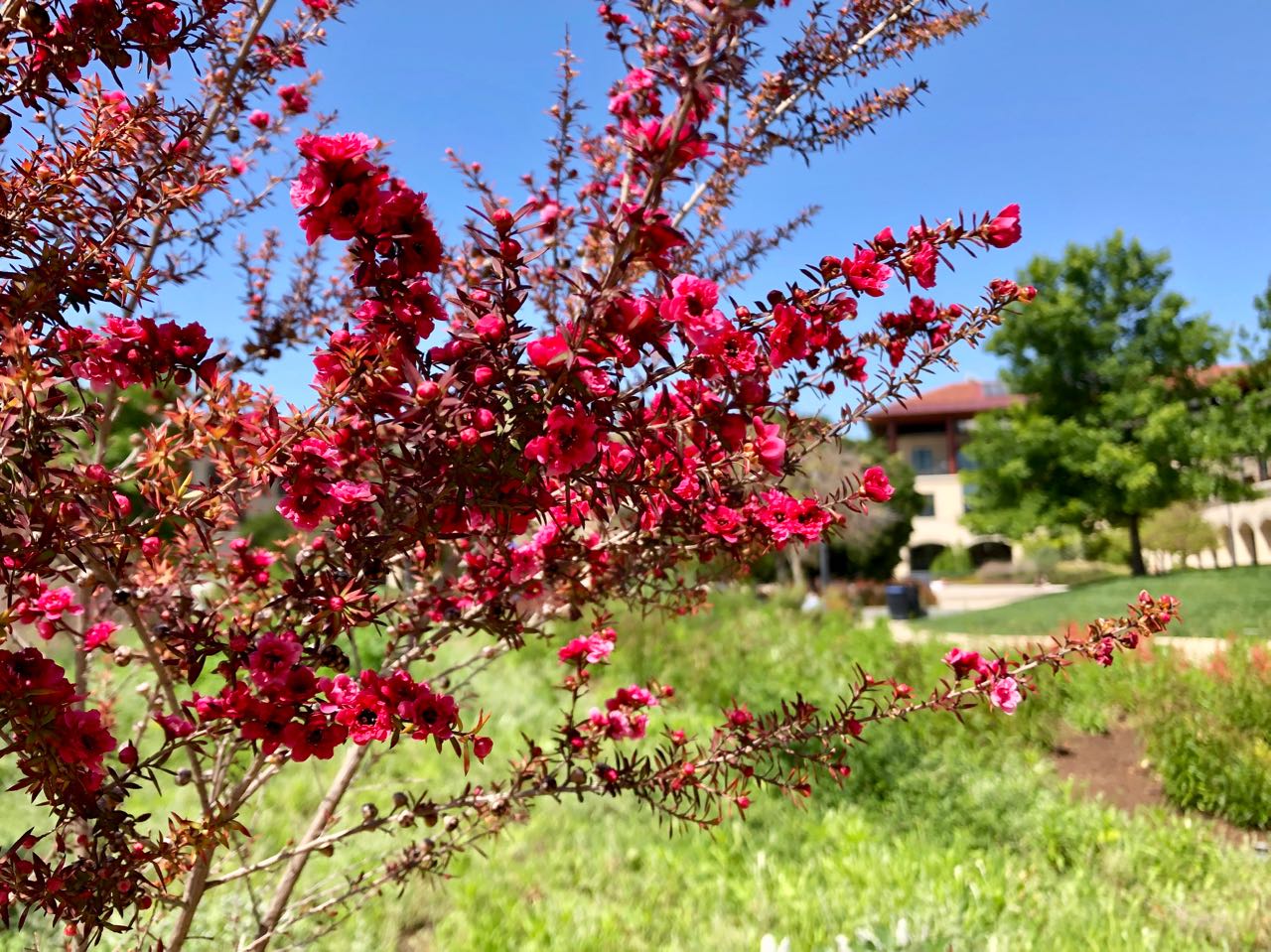Leptospermum scoparium
 manuka, New Zealand tea tree
manuka, New Zealand tea tree
Famous as the progenitor of some dozens of popular garden shrubs, the manuka tea tree itself has white flowers. The cultivars, some of which have double flowers, range in flower color through pinks to extreme deep reds and may have bronze foliage. The leaves are little more than prickles about ½ inch long. Some of the many available varieties were developed in New Zealand and some have originated in other places, including California (e.g. ‘Ruby Glow’).
There are four dozen white doubles on the south side of the service station at Serra Street and Campus Drive East, planted as a screen, and another white-flowering group at the southeast corner of Kimball Hall. Cultivars are popular in the faculty housing area. See red ones at 837 Cedro Way, 824 Tolman Drive, and 691 Mirada Avenue. Pink varieties are at 680 Salvatierra Street and 817 Pine Hill Road (with red). The deep-pink flowered, medium-high cultivar ‘Helene Strybing’ was planted in August 2006 as part of the new landscaping for the renovated Building 505 on Lasuen Mall.
Groundcover forms may be seen at the Clock Tower, with Cilician fir, and Meyer Green east side circle, with Arbutus ‘Marina’.
About this Entry: The main text of this entry is from the book Trees of Stanford and Environs, by Ronald Bracewell, published 2005. John Rawlings added the ‘Helene Strybing’ and groundcovers.





